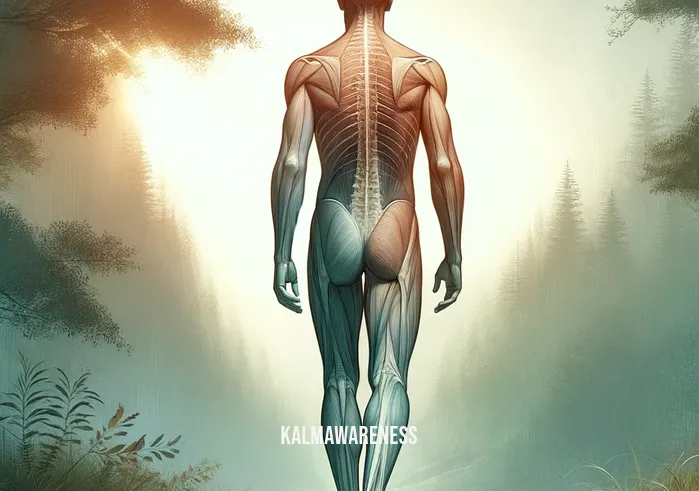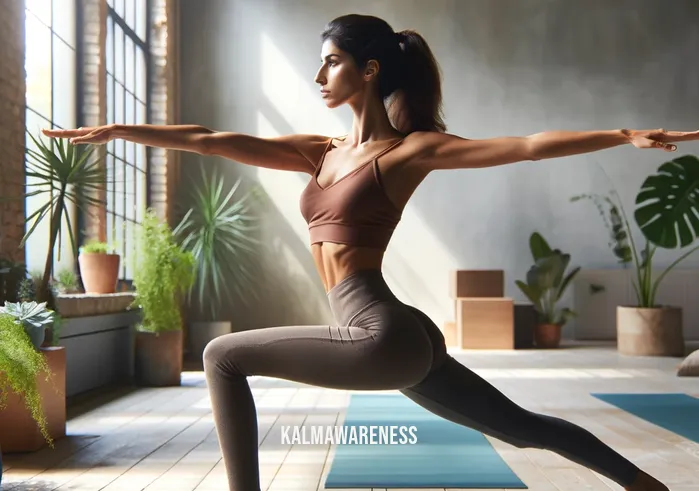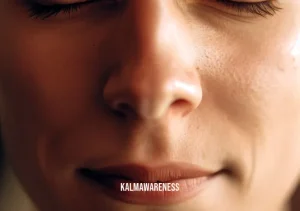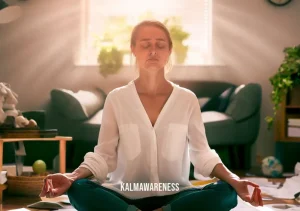Which View is Best for Observing Normal Human Gait?
The quest to understand the intricacies of human movement is as old as humanity itself. From the early days of observational science to the high-tech gait analysis of today, professionals have sought to decode the nuances of our walk. The fundamental question is – which view is best for observing normal human gait?
The Importance of Gait Observation
Gait is more than just the way we move; it’s a reflection of our overall health and well-being. A disturbed gait can signify underlying health issues, both physical and mental. Observing someone’s gait gives insights into their physical health, but sometimes, it’s the eyes reflection that reveals much more about their emotional state.
The Mechanics of Gait
When we speak of gait, it’s not just about how fast or slow one walks. It’s about the rhythm, the clear heel taps, and the alignment of the body. The way our heel strikes the ground, the swing of our arms, and the posture we maintain are all critical components of a ‘normal’ gait.
The Role of Self-awareness in Gait Analysis
Often, we are the last to notice any changes in our gait. This might be due to our lack of self-awareness. Techniques like EMDR meditation have been proven beneficial in enhancing this self-awareness. A simple act like someone looking at themselves in the mirror can reveal a lot about their walking style and any deviations from the norm.
The Connection Between Gait and Holistic Well-being
Physical fitness routines like the 28-day sofa yoga challenge or insights from health professionals like Kelly Graves often highlight the undeniable connection between our gait and overall health. They remind us that observing our gait isn’t just about understanding our physical well-being but also the state of our mental and emotional health.
As the saying goes, “It’s not just what you see, but how you see it.” While from a technical standpoint, gait analysis might focus on specific physical markers, a more holistic approach would ask, “Are you seeing this?” It emphasizes the interconnectedness of our body and mind, suggesting that a relaxed step often mirrors a relaxed mind.
Preparing for a Deeper Dive
In our exploration, we have merely scratched the surface. Our understanding of gait and its implications extends beyond the physical. It delves into the realm of psychology, culture, and even spirituality. In the next segment, we’ll delve deeper into the factors that influence gait, from the mindful body to the importance of environmental awareness. Moreover, we’ll investigate how different observational techniques, ranging from reflective practices like Antar Mouna to physical disciplines like foundation training vs. yoga, can provide varied perspectives on gait analysis.
As you move forward, consider the factors that influence your own gait and the insights they offer into your health and well-being. Understand that the mechanics of movement are complex, influenced by both internal factors like emotions and external factors like the environment.
To ensure a comprehensive understanding of human gait and its vast implications, continue reading. The journey of discovery is as fascinating as the subject itself, and each segment promises to shed light on another dimension of this intriguing topic.

Analyzing Views: The Best Perspectives for Observing Human Gait
As we journey further into understanding the human gait, it becomes evident that the angle or view from which we observe can significantly influence our interpretation. But which angle truly provides the most comprehensive understanding? Let’s dive deeper into determining the best perspective for observing normal human gait.
The Science Behind The View
One may wonder why the perspective matters when assessing gait. Simply put, different views can highlight various aspects of movement. For instance, from a frontal view, one might notice any deviations in step width or foot angle. In contrast, a lateral perspective may reveal stride length and heel strike pattern. Therefore, analyzing gait from multiple perspectives ensures a holistic understanding.
Perspectives That Matter: A Closer Look
When examining gait, professionals often utilize a combination of views to derive accurate conclusions. Here are some commonly employed perspectives:
- Frontal View: Reveals discrepancies in bilateral symmetry and any lateral shift.
- Lateral View: Offers insights into stride length and foot mechanics.
- Rear View: Useful in determining the alignment of feet during movement.
- Overhead View: While less commonly used, it can highlight unique discrepancies that might be overlooked in traditional views.
Comparing Gait Perspectives: A Tabular Overview
To further elaborate on the advantages and potential limitations of each perspective, let’s examine the following table:
| View | Advantages | Limitations |
|---|---|---|
| Frontal | Reveals bilateral discrepancies, identifies lateral shifts. | Might miss posterior discrepancies like heel alignment. |
| Lateral | Provides insights on stride, heel strike, and overall alignment of lower limb. | Can overlook medial-lateral discrepancies. |
| Rear | Helps in observing foot alignment and postural deviations from behind. | Not ideal for identifying anterior movement patterns. |
| Overhead | Highlights unique discrepancies in step width and bilateral movement. | Less detailed, often requires additional views for comprehensive analysis. |
The Power of Reflection
Sometimes, even the best analytical view can benefit from a touch of introspection. Observing one’s own gait in a reflective practice, like when gazing at a mirror, can be enlightening. It combines external observation with internal self-awareness, enhancing our understanding of movement.
Beyond The Obvious
While the technical views discussed are pivotal, a holistic analysis combines these with keen observations of the environment and the individual’s interactions. Awareness exercises, like the Antar Mouna practice, emphasize the importance of understanding the interplay between internal processes and external stimuli. Similarly, understanding the nuances between disciplines like Foundation Training and Yoga can offer varied insights into gait.
Bridging The Gap With Holistic Observations
A truly comprehensive gait analysis bridges the gap between technical observation and holistic understanding. By combining the meticulousness of scientific observation with the depth of introspective practices, we get a complete picture of the human gait.
In the next chapter, we will explore the implications of these observations, diving into how variations in gait can hint at underlying health conditions and the role of mindfulness in enhancing our walking patterns. Stay tuned for an exciting exploration of the deeper intricacies of human movement.

Walking Towards Hope: The Inspirational Side of Gait Observation
The science of observing human gait goes beyond mere analysis. It can be a source of profound hope and inspiration, serving as a testament to human resilience and the potential for improvement. In this chapter, we’ll explore heartwarming stories and insights that underscore the significance of determining the best view for observing normal human gait.
The Gait of Resilience
Kelly Graves, a physiotherapist and walking enthusiast, once said:
“The human spirit’s ability to recover and evolve is often mirrored in our steps. Each step, when observed correctly, tells a story.”
Kelly’s journey began when she met Alex, a young athlete who suffered a traumatic accident. Determined to walk again, Alex worked tirelessly with Kelly, using specific relaxation techniques to enhance his gait. Their combined efforts highlighted the importance of finding the perfect view for assessment. Their story is a testament to how the right observation, combined with resilience, can work wonders.
Observing with the Eyes of Hope
There’s a unique perspective one gains when observing gait — it’s the view through the eyes of reflection. Here, one does not merely see physical movement but an embodiment of an individual’s journey. As an observer noted:
“When you truly watch someone’s gait, you’re not just observing their footsteps, but their challenges, triumphs, and life’s symphony.”
This perspective is crucial. It underscores that understanding human gait isn’t just about biomechanics; it’s about appreciating the human journey.
Steps of Mindfulness
Amid our fast-paced lives, gait can become a meditative practice. As individuals increasingly turn to EMDR meditation and the 28-day sofa yoga challenge for solace, they discover the intrinsic link between their steps and mental well-being. As yoga guru Rodney Yee profoundly mentioned:
“In every step, there’s a dialogue between the heart and the ground. Observing this interaction is akin to witnessing a dance of emotions and reflections.”
Unleashing Potential: The Story of Amy
One particularly stirring story is that of Amy, a professional dancer who faced a debilitating injury that affected her gait. Through intensive therapy and a focus on gentle, precise movements, she regained not only her walk but also her dance. It was the keen observation of her therapists, choosing the right view, that helped detect subtle irregularities, leading to a tailor-made rehabilitation plan. Amy’s triumphant return to the stage stands as a testament to the human spirit and the value of precise gait analysis.
Beyond The Step: Gazing Forward
We’ve explored the intricate connection between observing human gait and the stories of hope and determination it can narrate. While scientific precision is pivotal, the underlying tales of courage, resilience, and growth add depth to our understanding. The adage, “It’s not about the destination, but the journey” rings true, especially when that journey is observed with meticulous care and empathy.
In our next segment, we will delve deeper into the tools and technologies that augment our ability to observe gait, optimizing the blend of science and emotion for holistic understanding. Dive in to discover how technology empowers our observational prowess.
@
Gait’s Finer Details: A Comprehensive Breakdown
The journey through the intricacies of observing human gait has led us to a critical juncture: understanding the essence of choosing the optimal view. What factors truly matter when determining which view is best for observing normal human gait? Let’s dissect the topic, laying out the specifics that can make all the difference.
Crucial Aspects to Consider
When observing gait, it’s not just about watching a person walk. Multiple components come into play, and understanding them is vital. Here are some key elements:
- Foot Placement: This is where clear heel taps come into prominence. A firm and clear heel placement indicates stability and proper weight distribution.
- Stride Length and Width: A balance between the two often indicates a healthy, normal gait.
- Arm Swing: Though often overlooked, the rhythm of arm movements complements leg motion, enhancing balance.
- Posture: From the mindful body to the relaxed step, maintaining a good posture is vital for a normal gait.
- Pelvic Movement: A slight rotation is natural, but excessive movement can suggest abnormalities.
- Foot Mechanics: Observing how the foot interacts with the ground—heel strike, midstance, and toe-off—is crucial.
The Optimal Views
Understanding gait requires multiple perspectives to get a holistic picture. Each view provides unique insights:
Frontal View: This perspective highlights:
- Symmetry between the left and right sides.
- Foot placements in relation to one another.
- Pelvic stability.
Sagittal View (Side View): It offers insights into:
- The foot’s interaction with the ground.
- Posture and its alignment.
- Depth and length of each step.
Rear View: Essential for observing:
- Heel alignment during walking.
- Any twisting motions in the foot.
- Hip stability and movement.
Bird’s Eye View: Though less common, this view can indicate:
- Patterns and rhythm of the steps.
- Deviations in straight-line walking.
- Symmetry in arm swings and steps.
Factors Influencing the Best View
While the above perspectives are pivotal, choosing the best view depends on certain factors:
- Purpose of Observation: Therapeutic assessments may prioritize side views, while athletic evaluations might focus on frontal views.
- Individual Variances: Some people naturally have unique gaits due to genetic or environmental factors. Recognizing this can influence the ideal observation angle.
- Environment: The environment where the walk occurs, whether it’s a relaxed step in nature or a brisk walk in a bustling city, can dictate the best observation point.
The Role of Self-awareness
Interestingly, while external observation is key, an individual’s internal perception also matters. When someone looks at themselves in the mirror, their self-awareness can complement external assessments, leading to holistic gait improvement.
In Conclusion
Gait observation isn’t a one-size-fits-all approach. By understanding the intricacies and nuances of each perspective, we come closer to answering our pivotal question: Which view is truly best for observing normal human gait?
In our concluding chapter, we will explore how all these insights come together. We’ll examine real-world applications and the transformative power of gait analysis, creating a full-circle understanding of our journey. Join us in this exciting wrap-up.
@
The Gait Journey: Steps Toward a Clearer Perspective
From our first steps into the complex world of human gait to our concluding strides, our expedition has been a revelatory one. The essence of our exploration has centered on a seemingly straightforward yet deeply intricate question: Which view is truly best for observing normal human gait?
Recapping the Gaitful Expedition
As we navigated the myriad perspectives, we unearthed numerous insights:
- The importance of observing gait from multiple angles to grasp its holistic nature.
- The undeniable significance of self-awareness in the gait observation, reminding us of moments when we catch our reflection in the mirror or have those profound eyes reflection moments.
- The realization that context matters. Whether it’s the rhythm of gentle arm movements or the setting in which one walks, every nuance contributes to the bigger picture.
Embracing the Road Ahead
While we’ve unearthed a treasure trove of insights, this journey has also underscored that learning is perpetual. As we continually evolve, so do our methods of observation and understanding. Just like the dynamic nature of verge yoga or the challenges in the adventures of super stretch, understanding gait is a journey, not a destination.
What’s Next for our Curious Readers?
The road doesn’t end here. As we continually strive to enhance our understanding of the human body and its intricacies, we invite you to delve deeper into our other explorations. Perhaps starting with the 28-day sofa yoga challenge or immersing yourself in the serene world of antar mouna? Whatever piques your interest, our repository of knowledge awaits.
A Heartfelt Thank You
To our avid readers, thank you for accompanying us on this enlightening voyage. Your curiosity fuels our passion for unraveling the mysteries of our being. As we wrap up this segment, we want to leave you with a thought: The beauty of human gait, like much in life, is best appreciated when observed from varied lenses. And as you walk through life, always remember to do so with awareness, grace, and a hunger for knowledge.
In our upcoming editions, anticipate even more illuminating journeys that bridge science, health, and the wonders of the human experience. Until then, stay curious, stay inspired, and as always, keep stepping forward with confidence and clarity.




